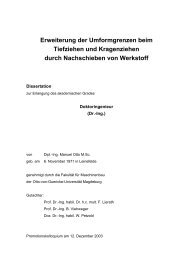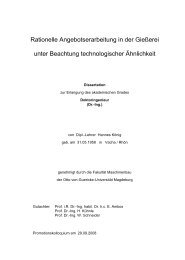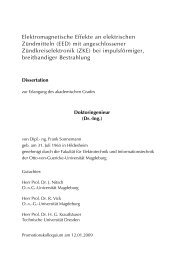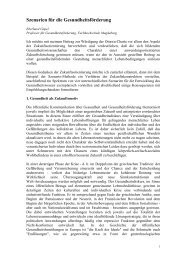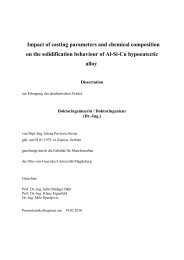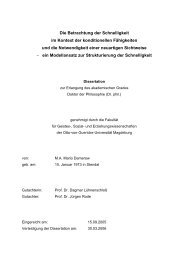Chapter 1
Chapter 1
Chapter 1
You also want an ePaper? Increase the reach of your titles
YUMPU automatically turns print PDFs into web optimized ePapers that Google loves.
importance of tax-financed public goods and infrastructure for nonproductive public expenditures and the associated<br />
as well as the need to minimize the distortionary effects of tax burden. The average tariff rate represents protectionist<br />
taxation; Ann Krueger and D. Orsmond (1990) argue for policies and price distortions not only in the tradable sector<br />
trade openness; Robert King and Ross Levine (1993) under- but in the whole economy as well. Finally, the ratio of<br />
line the importance of financial innovation; Wllliam Easterly exports to GDP accounts for outward orientation and the<br />
(1993) points out the importance of flexible, market-determined<br />
relative prices; and Stanley Fischer (1993) empha-<br />
degree of competitiveness in international markets.'<br />
sizes the role of macroeconomic stability.<br />
Originally developed to furnish evidence for testing the<br />
Structural reforms and growth in Tunisia<br />
theoretical models, empirical studies using cross-country In 1986 the Tunisian government initiated a comprehensive<br />
data provide policy makers with a wealth of information on program of structural reforms. Their accomplishments and<br />
the extent structural reforms promote economic growth. shortcomings, as well as their necessary next steps, have<br />
Some of the most widely cited empirical studies are those been analyzed in the previous chapters. Mostly as a result<br />
conducted by Robert Barro (1991), Robert Barro and X. of these reforms, the per capita GDP growth rate increased<br />
Sala-i-Martin (1994), Wllliam Easterly (1993), and the significantly from an average of 1.15 percent during<br />
analysis undertaken by a team of economists for The East 1981-86 to 2.44 percent for 1987-94. Using the estimates<br />
Asian Miracle (World Bank 1993a). In general terms, their provided in table 4.3, the contributing factors of this<br />
main conclusion is that economic growth is maximized when enhanced growth performance can be assessed<br />
the incentives to invest in physical and human capital as well quantitatively.<br />
as in technological innovation are determined by free-mar- The prereform period is represented by the years<br />
ket forces. Governments assist this process by providing an 1981-86, and the reform period consists of the years<br />
environment of macroeconomic and political stability and 1987-94. Given that particularly during the first three years<br />
the appropriate public infrastructure. of the reform (1987-89) the economy underwent a rather<br />
These empirical studies provide estimates for the effect TABLE 4.3<br />
of various economic variables on the growth rate of percapita<br />
GDP Since it is very difficult to directly assess the<br />
Determinants of economic growth<br />
importance of broadly defined reforms, such as improvee<br />
ments in "human capital investment' or "price distortions,<br />
An increase in:<br />
Investment/GDP<br />
of:<br />
I percentage point<br />
will change per<br />
capita GDP growth by:<br />
0.1 to 0.2 percent<br />
researchers have used readily observable variables as prox- Average years of<br />
ies for these reforms. Table 4.3 reports some of these secondary education I year 0.8 to 1.2 percent<br />
estimates.<br />
Govemment spending<br />
on education/GDP I percentage point 0.2 percent<br />
The first variable, the ratio of investment to GDP, repre- Life expectancy at birth 10 percentage points 0.7 percent<br />
sents physical capital formation across al sectors in the<br />
economy. The next three variables proxy for the level of<br />
M2/GDP<br />
Black market exchange<br />
rate (premium over<br />
1O percentage points 0.2 to 0.4 percent<br />
human capital in the country. Average years of secondary<br />
education in the adult population (aged twenty-five and<br />
official rate)<br />
Govemment consump-<br />
tion (net of education<br />
10 percentage points -0.4 percent<br />
over) and life expectancy at birth represent measures of spending)/GDP I0 percentage points -1.2 percent<br />
educational attainment and health conditions, respectively; Average tariff rate 10 percentage points -0.2 percent<br />
Exports/GDP 10 percentage points 0.6 percen,t<br />
governizent spending on education, as a ratio to GDP, EpsGDI pecnaeoit 06pret<br />
g Note: Somne caution nwat be taen when appying the estirmated effects presented in this<br />
roughly accounts for quality of education and public table to the experience of a particular country. The variables considered to explain<br />
involvement in working-force training programs. The vari- conornc condwns. for sirc coueor ut not hact mneasures y unreresn socioeable<br />
M2/GDP is a proxy for the state of development of the<br />
financial system. The black-market exchange rate premium<br />
conditions in a more direct and comprehensive way (for exarnple, a measure of consumption<br />
subsidies is better than the bbck-rnarket exchange rate premium as a proxy for<br />
price distortions), however, these other variables are usually not available for a large<br />
over official rate is a proxy for government-induced price aoup of thourteswicnawh<br />
rac oftheesimaed ffetsof<br />
is needed<br />
change<br />
to obtain<br />
in the<br />
reliable<br />
explanatry<br />
ecorometric<br />
varables<br />
estimates.<br />
on the growth<br />
The accu-<br />
rate is<br />
distortions in the economy. The ratio of government con- highest when the country in question is representative of the wod sample and when<br />
the considered changes are snall relative to the size of the variables.<br />
sumption (net of spending on education) to GDP proxies Source: Barro 1991; Easterly 1993; and Barro and Sala-i-Martin 1994.<br />
POUCIES FOR HGHER GROWTH 47




